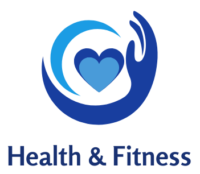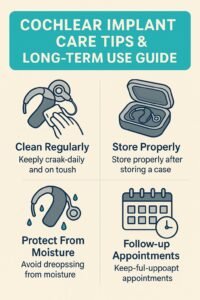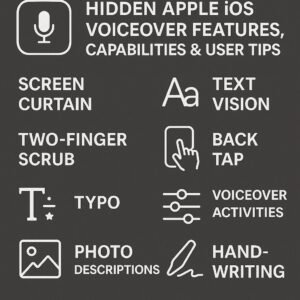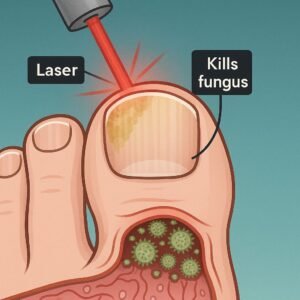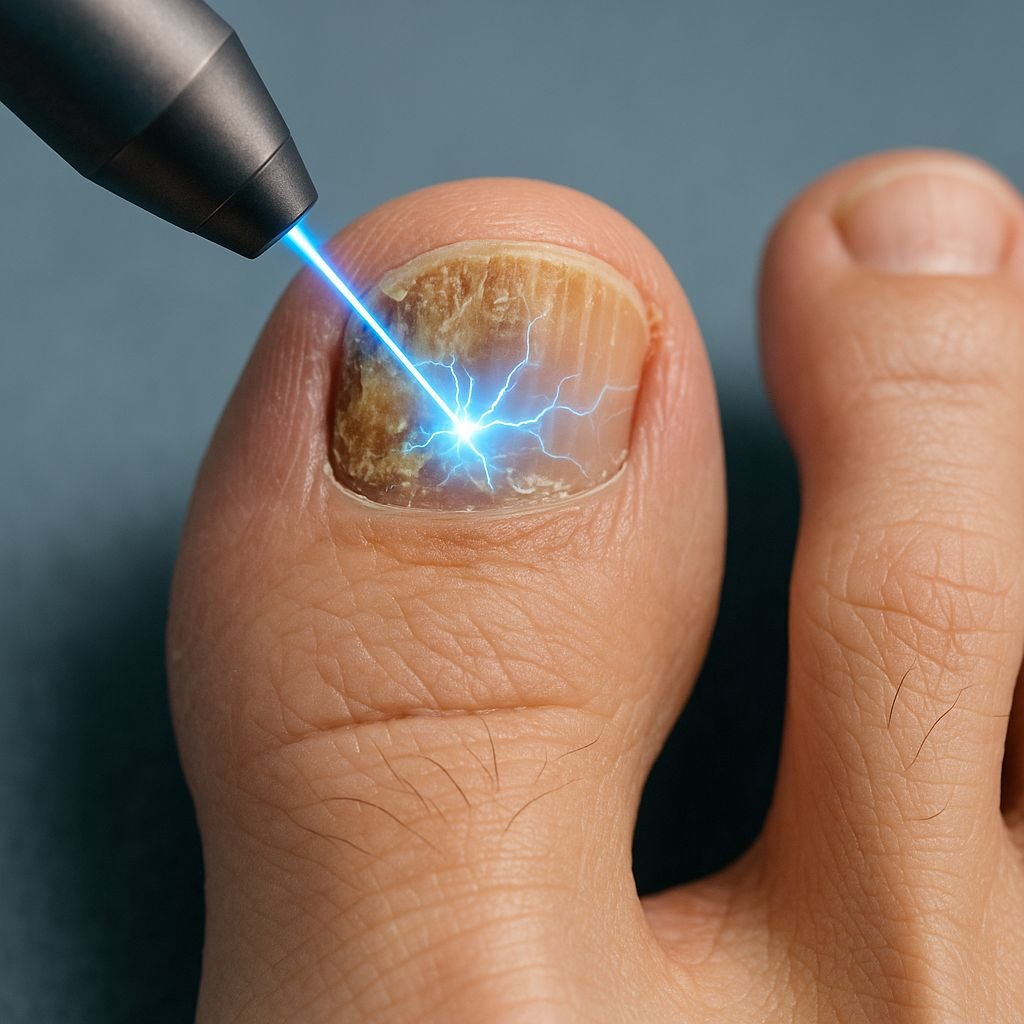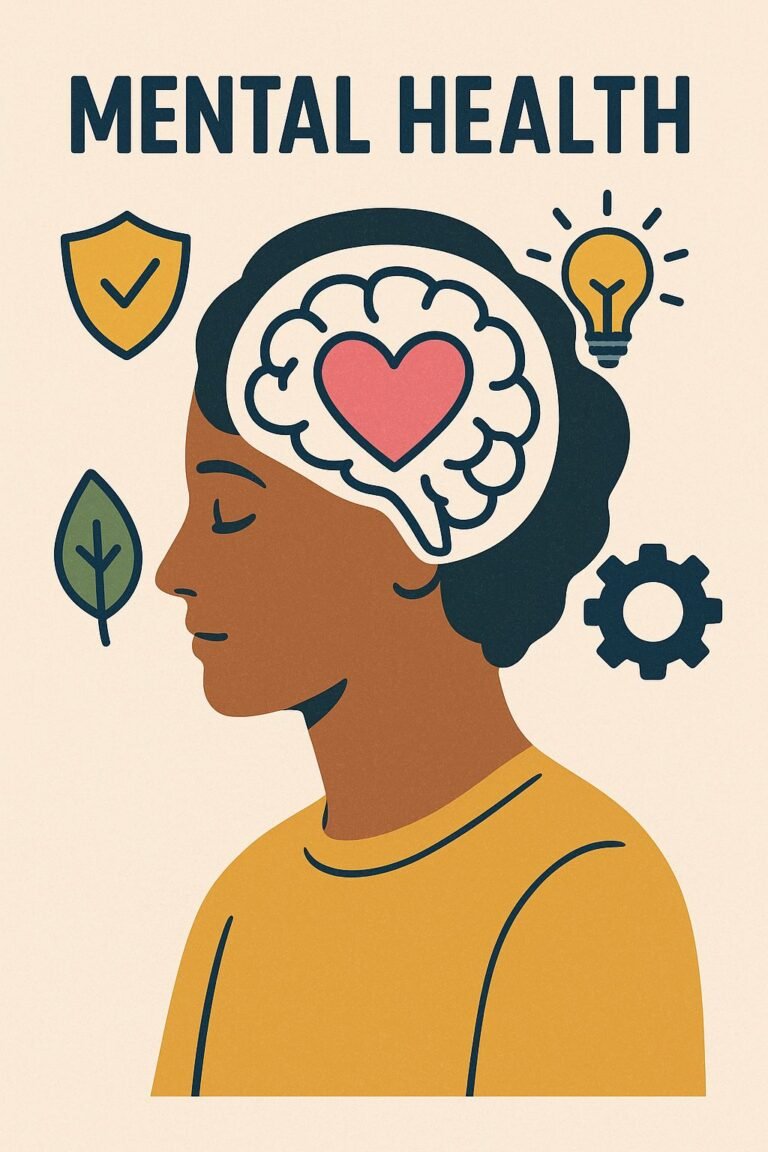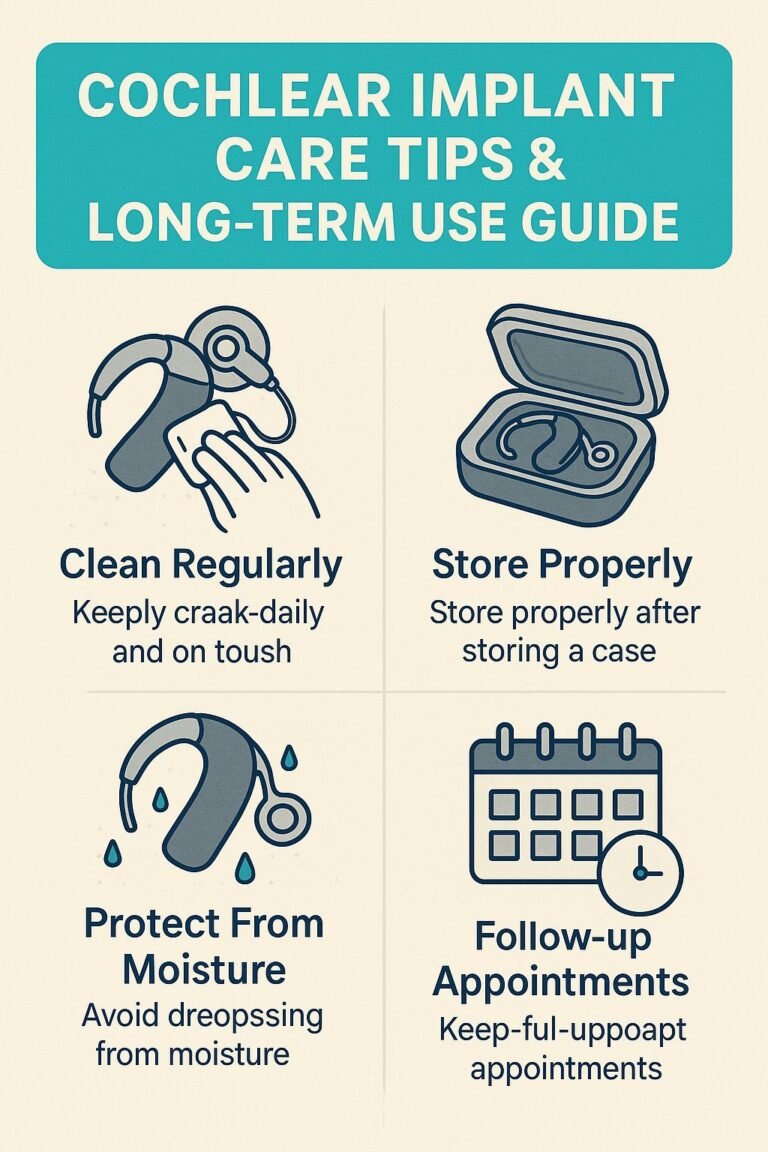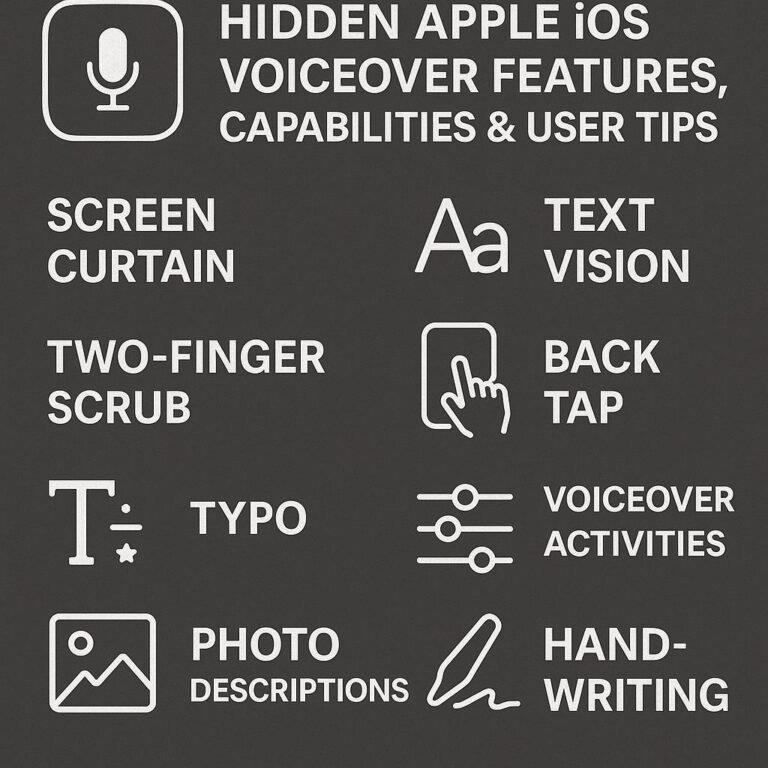Key Takeaways
- Laser nail fungus treatment destroys fungal cells without damaging surrounding healthy tissue, offering a non-invasive alternative to oral medications with success rates of 70-80% in clinical studies.
- Most patients require 3-4 treatment sessions spaced 4-6 weeks apart, with each painless session taking only 10-20 minutes to complete.
- Proper provider selection is crucial – board-certified podiatrists or dermatologists with specialized laser equipment deliver more reliable results than medical spas.
- Laser treatments typically cost $200-$500 per session and are rarely covered by insurance, though they eliminate the liver monitoring required with oral antifungal medications.
- Foot Team Texas provides comprehensive laser nail fungus treatment with state-of-the-art equipment and personalized aftercare protocols to prevent reinfection.
Struggling with persistent nail fungus that just won’t go away with over-the-counter treatments? Laser nail therapy has emerged as one of the most effective solutions for eliminating stubborn fungal infections. Unlike traditional treatments that can take months to show results, laser therapy targets the infection at its source, speeding up the healing process significantly.
At Foot Team Texas, we’ve seen remarkable success treating patients with our advanced laser systems. The technology penetrates the nail bed without damaging surrounding tissue, making it both effective and safe for most patients. This non-invasive approach has revolutionized how we address nail fungus, offering hope to those who’ve tried numerous treatments without success.
Why Laser Nail Therapy Works for Stubborn Fungal Infections
Conventional treatments like topical antifungals often fail because they simply can’t penetrate the nail plate effectively to reach the fungus growing underneath. Oral medications can work but come with potential side effects and require liver function monitoring. Laser therapy, however, bypasses these limitations entirely by delivering focused energy directly to the infection site.
The targeted heat from laser treatments destroys fungal cells while leaving healthy tissue intact. This precision is why many patients see improvement after just a few sessions, compared to the months required for topical solutions to show any effect. Additionally, laser treatment eliminates the systemic side effects associated with oral antifungal medications, making it suitable even for patients with liver concerns or those taking multiple medications.
Another significant advantage is the lack of drug resistance development. While fungi can adapt to resist medications over time, they cannot develop resistance to the thermal damage caused by lasers. This makes laser therapy particularly valuable for recurrent infections that have proven resistant to conventional treatments.
- No systemic side effects compared to oral medications
- More effective penetration than topical treatments
- Minimal to no recovery time needed
- No risk of developing drug resistance
- Can treat multiple nails in a single session
How Laser Therapy Kills Nail Fungus
Laser nail fungus treatment works through a process called photothermolysis. The laser emits a specific wavelength of light that passes through the nail to the fungus beneath. This light energy converts to heat when it contacts the pigment in the fungal cells, effectively destroying them without harming the surrounding healthy tissue. For more information on effective treatments, check out this comprehensive guide on toenail fungus treatment.
What makes this approach particularly effective is its selective targeting. The laser’s wavelength is specifically calibrated to be absorbed by the fungal organisms while being largely ignored by human cells. This selective heating creates a hostile environment for the fungus, denaturing its proteins and disrupting its cell membranes, which ultimately leads to cell death.
The heat generated also helps stimulate blood circulation in the treated area. Improved blood flow brings more immune cells and nutrients to the infected region, helping your body’s natural defenses fight the remaining infection. This dual-action approach—directly killing fungal cells while boosting your immune response—creates a powerful combination that accelerates the healing process.
Furthermore, the laser can reach areas that topical treatments simply cannot penetrate. Nail fungus often hides deep within nail beds and under the nail plate, making it difficult for creams and solutions to reach. Laser energy can pass through the nail to target these hidden reservoirs of infection, addressing the root cause rather than just treating surface symptoms.
- Creates thermal damage specifically to fungal cells
- Penetrates the nail plate to reach deep infection sites
- Stimulates blood circulation to enhance immune response
- Denatures fungal proteins making reproduction impossible
- Requires no anesthesia or recovery period
The Science Behind Photobiomodulation
Photobiomodulation Mechanisms in Fungal Nail Infections
When laser light interacts with infected tissue, it triggers multiple biological responses: increased ATP production, reactive oxygen species generation, and activation of transcription factors. These mechanisms don’t just kill fungus—they create an environment that makes it difficult for fungal organisms to survive while supporting healthy nail regrowth. Discover natural solutions for vision care that can complement your overall health regimen.
Beyond simple heat destruction, laser therapy harnesses the power of photobiomodulation—the biological effects that occur when tissues absorb light energy. This process stimulates cellular metabolism and accelerates the body’s natural healing mechanisms. In the context of nail fungus treatment, photobiomodulation helps damaged nail tissue regenerate more quickly after the fungal infection has been addressed.
The wavelengths used in nail fungus lasers (typically 1064nm Nd:YAG lasers) penetrate to precisely the right depth to target the dermatophytes responsible for most nail infections. Studies have shown that these organisms begin to die when exposed to temperatures between 43-51°C (109-124°F), which the laser can achieve without causing discomfort or damage to surrounding tissue.
Interestingly, recent research suggests that photobiomodulation may also help restore normal nail growth patterns. Fungal infections often disrupt the nail matrix, leading to thickened, discolored nails. The biostimulation effect of laser therapy appears to help normalize cellular activity in the nail growth center, promoting healthier new nail growth.
Different Types of Laser Technologies
Several laser technologies are currently used for nail fungus treatment, each with its own advantages. The most common is the Nd:YAG laser, which operates at a 1064nm wavelength—ideal for penetrating the nail bed without damaging surrounding tissue. This type has the most clinical research supporting its efficacy and safety profile.
Q-switched lasers deliver energy in very short, intense pulses that create photoacoustic waves, essentially shattering fungal cells while minimizing heat transfer to healthy tissue. These systems are particularly effective for thicker nails where deeper penetration is required. Some newer systems combine different wavelengths to target multiple aspects of the infection simultaneously.
Diode lasers represent another technology gaining popularity for nail fungus treatment. These systems typically operate at wavelengths between 870-1470nm and offer excellent tissue penetration with precise control. The controlled heat delivery makes them especially suitable for patients with thinner nails or those concerned about discomfort during treatment.
Success Rates Based on Clinical Studies
Clinical studies on laser nail therapy show promising results, with success rates ranging from 70-80% for patients who complete the recommended treatment course. A 2017 multi-center study published in the Journal of the American Podiatric Medical Association found that 83% of patients showed significant improvement after three treatments, with complete clearance in 13% of cases and substantial improvement in 70%. For more information on effective treatments, you can explore this toenail fungus treatment guide.
Effectiveness varies based on several factors including infection severity, patient age, and underlying conditions. Patients with mild to moderate infections typically respond better than those with severe, long-standing cases. Younger patients often see faster improvement, likely due to more rapid nail growth and stronger immune function.
It’s important to note that results develop gradually as the healthy nail grows out. Most patients begin to see visible improvement within 3-4 months after completing treatment, with continued improvement over 9-12 months as the nail fully regenerates. This timeline explains why follow-up studies showing long-term results (12+ months) generally report higher success rates than short-term evaluations.
What to Expect During Your First Laser Treatment
Your first laser treatment appointment typically begins with a thorough assessment of your nail infection. The provider will examine your nails, possibly take photographs for before-and-after comparison, and discuss your medical history to ensure you’re a suitable candidate for the procedure. This consultation is also your opportunity to ask questions about the treatment process and expected outcomes.
Most clinics will clean the treatment area thoroughly before beginning the laser session. This ensures no topical products or debris interfere with the laser’s effectiveness. The procedure itself is remarkably straightforward—you’ll sit comfortably while the technician methodically applies the laser to each affected nail, ensuring complete coverage of the infection.
The Step-by-Step Treatment Process
After the initial consultation and nail preparation, you’ll be positioned comfortably with your affected foot or hand accessible to the technician. Protective eyewear may be provided for both you and the operator to shield against the laser light. The treatment room is typically maintained at a comfortable temperature to enhance blood circulation to the extremities during treatment.
The technician will then adjust the laser parameters based on your specific infection characteristics, nail thickness, and sensitivity level. The handheld laser device is positioned directly over each infected nail, methodically moving across the entire nail surface to ensure complete coverage. Most devices emit a series of pulses or a continuous beam that you may feel as gentle warmth or slight tingling. For more information on treatment options, explore instant toenail fungus home remedies.
Each nail typically requires 2-3 minutes of treatment time, depending on the size and severity of the infection. The technician will likely treat even uninfected nails as a preventative measure, particularly those adjacent to infected ones. Throughout the process, the technician should communicate with you about your comfort level and may adjust the intensity if you experience any discomfort.
Is Laser Treatment Painful?
Most patients report minimal discomfort during laser nail treatments. The sensation is typically described as a warming or tingling feeling—similar to holding your hand close to a light bulb. The technology is designed to heat the nail bed to temperatures that destroy fungal cells (around 43-51°C) without reaching the pain threshold of human tissue. For those interested in exploring additional solutions, check out this comprehensive guide on toenail fungus treatments.
Sensitivity varies from person to person, with some patients reporting no sensation at all while others experience mild discomfort particularly toward the end of treatment on each nail. The procedure doesn’t require anesthesia, and technicians can adjust the laser intensity if you find it uncomfortable. Most systems also have built-in cooling mechanisms to prevent overheating and enhance comfort.
For patients with particularly sensitive nails or anxiety about the procedure, some providers offer options like stress balls to squeeze during treatment or brief breaks between nails. The mild warmth sensation typically dissipates immediately after the laser application stops, leaving no residual discomfort once the session is complete.
How Long Each Session Takes
A typical laser nail fungus treatment session lasts between 10-20 minutes total, depending on how many nails require treatment. For patients with just one or two affected nails, sessions may be as short as 5-10 minutes. Those requiring treatment on multiple toenails or fingers might expect sessions closer to 30 minutes, including preparation time.
The efficiency of treatment has improved significantly with newer laser systems. Early-generation devices required longer exposure times for each nail, sometimes up to 10 minutes per nail. Modern systems can effectively treat a nail in 2-3 minutes while delivering more consistent energy distribution for better results.
One significant advantage of laser therapy is the minimal time commitment compared to topical treatments that require daily application for months. Even counting multiple sessions, the total time investment for a complete laser treatment course is substantially less than the cumulative time spent applying topical medications over several months.
Number of Sessions Typically Needed
Most patients require 3-4 treatment sessions to achieve optimal results from laser nail therapy. These sessions are typically spaced 4-6 weeks apart to align with the natural growth cycle of the nail and allow time for the immune system to respond to the initial treatments. This spacing also gives your provider an opportunity to assess progress and adjust the treatment protocol if needed.
The number of sessions varies based on several factors including infection severity, nail thickness, and individual response to treatment. Patients with mild infections may see significant improvement after just 1-2 sessions, while those with severe, long-standing infections might require 4-6 treatments for optimal clearance. Your provider should outline an expected treatment course during your initial consultation.
Research indicates that multiple sessions yield significantly better results than single treatments. A study published in the Journal of Clinical and Aesthetic Dermatology found that patients receiving three treatments showed a 30% higher clearance rate compared to those receiving a single treatment. This supports the cumulative effect of repeated laser exposure on fungal organisms hiding deep within the nail bed.
Finding the Right Provider for Laser Nail Therapy
Selecting the right provider is crucial for successful laser nail fungus treatment. The effectiveness of the procedure depends not only on the technology used but also on the operator’s skill and experience. Board-certified podiatrists and dermatologists with specific training in laser therapy generally provide the most reliable results, as they combine laser expertise with comprehensive knowledge of nail conditions.
When researching providers, look for specialists who offer multiple treatment options rather than those who promote laser therapy as a stand-alone miracle cure. Reputable clinics typically incorporate laser treatment into a comprehensive approach that may include supplementary topical treatments, preventive measures, and lifestyle recommendations. This integrated approach yields the highest success rates and lowest recurrence. For more information, you can read The Guide to Laser Nail Fungus Removal.
Preventing Reinfection
Preventing reinfection is a critical component of successful laser nail fungus treatment. Even the most effective laser therapy can be undermined if you don’t take proper precautions against reintroducing fungal organisms to your nails. The warm, moist environment inside shoes creates perfect conditions for fungal growth, making footwear a common source of reinfection.
Start by disinfecting all your shoes using antifungal sprays or UV shoe sanitizers, which are specifically designed to kill fungal spores hiding in footwear. Consider rotating between multiple pairs of shoes to allow each pair to completely dry out between wearings, as moisture creates an ideal breeding ground for fungus. Moisture-wicking socks made from natural fibers or specialized antifungal materials can also significantly reduce reinfection risk by keeping feet dry throughout the day.
Public spaces like pools, locker rooms, and showers harbor abundant fungal spores. Always wear protective footwear in these environments, even after your infection appears to have cleared. Remember that fungal spores can remain dormant on surfaces for months, so maintaining these preventive measures long-term is essential for lasting results.
How to Monitor Nail Growth Progress
Monitoring nail growth provides valuable feedback on your treatment’s effectiveness. Since toenails grow slowly—approximately 1mm per month—patience is essential when evaluating progress. Take clear, well-lit photographs of your affected nails before beginning treatment and then monthly thereafter, keeping the angle and lighting consistent for accurate comparison.
Look for several key indicators of improvement rather than focusing solely on appearance. The emergence of clear, healthy nail growing from the base is the most reliable sign of successful treatment, even if the distal portion remains affected. Other positive signs include decreased nail thickness, reduced brittleness, and diminishing discoloration as the nail grows out.
Track your progress using a simple journal noting changes in appearance, thickness, and any symptoms like pain or discomfort. This record helps identify patterns and can motivate you during the lengthy regrowth process. Remember that complete nail replacement takes 6-12 months for toenails and 3-6 months for fingernails, so improvements will be gradual rather than immediate.
If you don’t see any improvement after 3-4 months following your complete treatment course, consult your provider to reevaluate your condition. Sometimes what appears to be persistent fungus might be nail damage or another condition entirely, requiring different interventions. For more information on treatments, check out this guide on toenail fungus treatments.
Nail Growth Progress Timeline
1-3 Months: New, clear nail begins emerging from the cuticle area. The previously infected portion will still appear discolored.
3-6 Months: Approximately 1/3 to 1/2 of the nail should show healthy growth. Nail thickness may begin normalizing. For more information on effective treatments, explore our toenail fungus treatment guide.
6-9 Months: Most of the nail should display healthy growth with only the tip showing signs of previous infection. For more information on treating nail infections, check out these instant toenail fungus home remedies.
9-12 Months: Complete replacement with clear, healthy nail for most patients. Thicker toenails may require the full 12 months.
Combining Laser Therapy with Other Treatments
While laser therapy is powerful on its own, combining it with complementary treatments can significantly enhance results. The most successful approach to nail fungus often involves a multi-faceted strategy that addresses the infection from multiple angles. This comprehensive approach targets both the existing infection and creates an environment hostile to fungal regrowth.
Your provider might recommend a customized combination of treatments based on your specific infection characteristics, overall health, and lifestyle factors. This integrated approach may include prescription-strength topical antifungals, oral medications for severe cases, specialized nail care routines, and preventive measures. Studies show that combination therapies can increase success rates by 15-30% compared to single-modality treatments.
Topical Antifungals as Companions to Laser Therapy
Prescription-strength topical antifungals work synergistically with laser treatment by maintaining pressure on any surviving fungal cells between laser sessions. Products containing ingredients like ciclopirox, tavaborole, or efinaconazole are particularly effective when applied immediately after laser treatment when the nail plate is more permeable due to thermal effects. For a comprehensive guide on treating toenail fungus, check out this treatment remedies guide.
Apply these topicals exactly as prescribed, typically once daily, making sure to cover both the nail plate and the surrounding skin where fungal spores may hide. The slight warming effect of laser therapy temporarily increases nail permeability, creating a 48-72 hour window where topical agents can penetrate more effectively than usual. This enhanced absorption maximizes the combination’s effectiveness. For more on effective solutions, explore instant toenail fungus home remedies.
For severe infections, your provider might recommend using a urea-based product periodically to soften and partially dissolve the infected nail material. This not only improves the penetration of antifungal agents but also removes some of the fungal burden mechanically. Always follow your provider’s guidance on frequency and application technique, as improper use can irritate the surrounding skin.
Dietary Changes That Support Fungal Elimination
Nutrition plays a surprisingly important role in fighting fungal infections. Foods rich in antifungal compounds can support your body’s natural defenses while creating an internal environment less hospitable to fungal overgrowth. Incorporate garlic, onions, coconut oil, and oregano into your diet—all contain natural compounds with documented antifungal properties that work systemically throughout the body.
Limiting sugar and refined carbohydrates can significantly impact treatment success, as these foods feed fungal organisms. Instead, focus on a balanced diet rich in probiotics, zinc, and vitamins A, C, and E, which support immune function and healthy nail growth. Drinking plenty of water also helps flush toxins and supports the circulation needed for nail healing.
Footwear and Hygiene Practices
Your choice of footwear dramatically impacts treatment success and reinfection risk. Choose breathable shoes made from natural materials like leather or canvas, and consider models with antimicrobial linings. Avoid plastic or synthetic shoes that trap moisture against the foot. For exercise, specialized moisture-wicking athletic socks paired with well-ventilated shoes can maintain a drier environment even during intense activity. For more information on keeping your feet healthy, check out this toenail fungus treatment guide.
Develop a consistent hygiene routine that includes thoroughly drying between toes after bathing, changing socks daily (or more frequently if feet become damp), and regular nail maintenance. Keep nails trimmed straight across and file down thickened areas gently to reduce fungal burden. Some patients benefit from weekly soaks in a solution of apple cider vinegar and water, which creates an acidic environment that discourages fungal growth while being gentle on skin.
Realistic Timeline: When You’ll See Clear Nails Again
Most patients begin seeing visible improvement within 3-4 months after completing their laser treatment course, though complete clearing typically takes 6-12 months as the nail grows out. The growth rate varies significantly between individuals based on age, overall health, and circulation to the extremities. Fingernails grow approximately twice as fast as toenails, so hand infections resolve more quickly than foot infections. Rather than expecting overnight results, commit to the long-term process and celebrate incremental improvements as the healthy nail gradually replaces the infected portion.
Frequently Asked Questions
Here are answers to the most common questions patients have about laser nail fungus treatment. Understanding these aspects of treatment can help you make informed decisions and set appropriate expectations for your recovery journey.
How soon after laser treatment can I wear nail polish?
Wait at least 1-2 weeks after your final laser treatment before applying regular nail polish, and limit use to special occasions rather than continuous wear. If you must use polish, opt for antifungal nail lacquers or breathable formulations specifically designed to allow moisture vapor transmission. Remove polish completely at least two days per week to let the nail breathe, and never apply polish over nails that show signs of active infection or inflammation.
Does laser therapy work on all types of nail fungus?
Laser therapy is most effective against dermatophyte fungi (the most common cause of nail fungus), showing success rates of 70-80% for these infections. It has moderate effectiveness against yeast infections like Candida, with success rates around 60-70%. However, mold infections (non-dermatophyte molds) respond less predictably to laser therapy alone and often require combination approaches. Your provider should perform proper identification of your specific fungal type before treatment to establish appropriate expectations and potentially customize your treatment protocol.
Are there any side effects from laser nail therapy?
Laser nail therapy is remarkably free of significant side effects when performed correctly. Some patients report mild warmth or tingling during treatment, and occasionally a slight darkening of the nail immediately after therapy which resolves within days. Unlike oral antifungals, there’s no risk of liver damage, no drug interactions, and no need for blood test monitoring. The most common adverse effect is disappointment from unrealistic expectations about how quickly results will appear. For those seeking alternative treatments, consider exploring instant toenail fungus home remedies as a complementary approach.
Can children receive laser treatment for nail fungus?
Laser treatment is generally considered safe for children over 12 years old who can remain still during the procedure and understand the importance of not looking directly at the laser beam. For younger children, providers typically recommend less invasive approaches first, such as topical treatments, as children’s nails grow faster and often respond well to these conservative measures.
If laser treatment is deemed appropriate for a minor, the sessions are usually shortened slightly and may use reduced energy settings. Parents should be present during the consultation to provide consent and during treatment to help keep the child calm and properly positioned.
Will my insurance cover laser nail therapy?
Most insurance plans classify laser nail fungus treatment as cosmetic and don’t provide coverage, despite its medical benefits. Some providers offer package pricing or financing options to make treatment more affordable. If you have a Health Savings Account (HSA) or Flexible Spending Account (FSA), these funds can typically be used for laser nail therapy.
In certain cases where nail fungus is causing secondary complications like recurrent infections or mobility issues, some insurance plans may provide partial coverage. Request a detailed receipt with appropriate medical coding from your provider to submit for possible reimbursement.
Laser nail therapy is an innovative treatment option for those suffering from toenail fungus. This method uses focused laser light to penetrate the nail and eliminate the fungus at its source. Unlike traditional treatments, laser therapy is non-invasive and typically requires fewer sessions. For those interested in exploring more about this condition and its remedies, check out this comprehensive guide on toenail fungus treatment.
